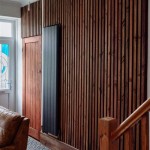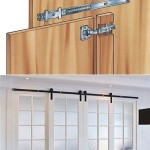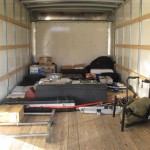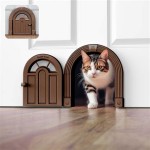Simple Office Interior Design Ideas For Small Spaces
Optimizing a small office space requires careful planning and a strategic approach to design. The goal is to create a functional, comfortable, and aesthetically pleasing environment that maximizes productivity and minimizes clutter. This can be achieved through thoughtful furniture selection, smart storage solutions, and a well-considered color palette. Space constraints demand innovative solutions that prioritize efficiency and visual appeal. Several key elements contribute to the successful design of a small office, and these will be explored in detail.
Maximizing Vertical Space
Vertical space is often underutilized in small offices. Implementing strategies to leverage this dimension can significantly increase storage and display capabilities without encroaching on valuable floor area. Shelving units, wall-mounted organizers, and tall cabinets are excellent choices for maximizing vertical space. The key is to select storage solutions that are proportionate to the space and do not overwhelm the room.
When choosing shelving units, consider open shelving to create a sense of openness and allow for easy access to materials. Closed cabinets can be used to conceal less aesthetically pleasing items or sensitive documents. Combine open and closed storage options for a balanced approach. Ensure the shelves are sturdy and capable of supporting the weight of the items being stored. Consider adjustable shelves to accommodate different sized items and adapt to changing storage needs.
Wall-mounted organizers are particularly useful for holding supplies such as pens, paper, and folders. They can be installed above desks or in other areas where they are easily accessible. Look for organizers with multiple compartments to maximize storage capacity. Whiteboards and pinboards can also be mounted on walls to provide a space for brainstorming and displaying important information. These visual aids can help to keep ideas organized and accessible.
Tall cabinets are ideal for storing larger items such as files, equipment, or reference materials. Opt for cabinets that reach close to the ceiling to maximize vertical storage. Consider cabinets with drawers, shelves, and doors to provide a variety of storage options. Ensure the cabinets are securely anchored to the wall to prevent tipping, especially if they are heavily loaded. Consider integrating vertical planters to add a touch of nature and improve air quality. Plants can be strategically placed on shelves or mounted on walls to create a visually appealing and calming environment.
By effectively utilizing vertical space, a small office can achieve a significant increase in storage capacity and functionality without sacrificing valuable floor area. This approach contributes to a more organized, efficient, and comfortable workspace.
Choosing Multi-Functional Furniture
In a small office, every piece of furniture should serve a purpose and ideally, multiple purposes. Multi-functional furniture is designed to optimize space and provide flexibility, allowing for a more efficient and adaptable workspace. Investing in furniture that can be easily transformed or repurposed can make a significant difference in the functionality of a small office.
A folding desk is an excellent example of multi-functional furniture. When not in use, it can be folded away to free up floor space. This is particularly useful for offices that occasionally need to be used for other purposes, such as meetings or presentations. Consider a wall-mounted folding desk to maximize space-saving potential. Ensure the desk is sturdy and provides a comfortable work surface when in use.
Storage ottomans are another versatile option. They can be used as seating, footrests, or storage containers. Choose ottomans with lift-up lids to provide concealed storage space for items such as office supplies, documents, or personal belongings. Ottomans can also be easily moved around the office to provide flexible seating options for visitors or collaborators. Select ottomans that complement the overall décor of the office and provide a comfortable seating experience.
Convertible sofas can transform from a comfortable seating area into a guest bed, offering a practical solution for accommodating occasional overnight visitors. This is particularly useful for home offices or small businesses that host clients or colleagues. Choose a sofa that is easy to convert and provides a comfortable sleeping surface. Consider a sofa with built-in storage to further maximize space-saving potential.
Desks with built-in storage are ideal for keeping the workspace organized and clutter-free. Look for desks with drawers, shelves, and cabinets to provide ample storage space for office supplies, documents, and equipment. Choose a desk that is the right size for the space and provides a comfortable work surface. Consider a standing desk to promote better posture and reduce sedentary behavior. A standing desk can also be easily adjusted to accommodate different users and tasks.
By incorporating multi-functional furniture, a small office can maximize its utility and adaptability. This approach allows for a more efficient and versatile workspace that can easily adapt to changing needs.
Optimizing Natural Light and Artificial Lighting
Proper lighting is essential for creating a comfortable and productive work environment. Natural light is generally preferred, but artificial lighting can be used to supplement or replace it when natural light is limited. Optimizing both natural and artificial lighting can significantly improve the ambiance and functionality of a small office.
Maximize natural light by keeping windows clean and unobstructed. Avoid using heavy curtains or blinds that block out sunlight. Instead, opt for sheer curtains or adjustable blinds that allow you to control the amount of light entering the room. Position the desk near a window to take advantage of natural light while working. However, be mindful of glare on the computer screen and adjust the position of the desk accordingly.
Supplement natural light with artificial lighting to ensure adequate illumination throughout the office. Use a combination of ambient, task, and accent lighting to create a balanced and well-lit environment. Ambient lighting provides overall illumination for the room, while task lighting focuses on specific work areas. Accent lighting is used to highlight specific features or create a more visually appealing atmosphere.
Overhead lighting fixtures should provide a consistent and even distribution of light throughout the office. Consider using LED lighting, as it is energy-efficient and provides a bright, natural-looking light. Avoid using fluorescent lighting, as it can cause eye strain and headaches. Install dimmer switches to allow you to adjust the brightness of the overhead lights as needed.
Task lighting should be used to illuminate specific work areas, such as the desk or computer. A desk lamp with an adjustable arm and shade can be used to direct light where it is needed most. Choose a desk lamp with a high color rendering index (CRI) to ensure accurate color perception. Consider using a blue light filter on the computer screen to reduce eye strain and improve sleep quality.
Accent lighting can be used to highlight artwork, plants, or other decorative features in the office. Use spotlights or track lighting to direct light onto specific areas. Consider using color-changing LED lights to create a more dynamic and visually appealing atmosphere. Incorporate natural elements, such as plants, to improve air quality and create a more relaxing environment. Plants can also help to reduce stress and improve focus.
By optimizing natural light and artificial lighting, a small office can create a more comfortable, productive, and visually appealing work environment. This approach contributes to improved employee well-being and overall office functionality.
Using Color Strategically
Color plays a vital role in shaping the atmosphere of a small office. The right color palette can create a sense of spaciousness, enhance productivity, and promote a positive work environment. Conversely, poorly chosen colors can make the space feel cramped and stifling. Strategic use of color is essential for maximizing the potential of a small office.
Light and neutral colors are generally recommended for small spaces, as they reflect light and create a sense of openness. White, beige, light gray, and pastel shades are excellent choices for walls and ceilings. These colors can make the office feel brighter and more spacious. Avoid using dark or vibrant colors on large surfaces, as they can make the space feel smaller and more enclosed.
Accent colors can be used to add visual interest and personality to the office. Use accent colors sparingly, such as on accent walls, furniture, or accessories. Choose accent colors that complement the neutral base color and create a harmonious color scheme. Consider using colors that evoke certain moods or emotions, such as blue for calmness and focus, or green for creativity and growth.
Incorporate pops of color through artwork, plants, and decorative accessories. These elements can add visual appeal and personality to the office without overwhelming the space. Choose artwork that complements the overall color scheme and reflects the company's brand or values. Use plants to add a touch of nature and improve air quality. Decorative accessories can be used to add visual interest and create a more welcoming atmosphere.
Consider the psychological effects of color when choosing a color palette for the office. Different colors can evoke different emotions and influence behavior. For example, blue is often associated with calmness and focus, while red is associated with energy and excitement. Choose colors that support the desired work environment and promote productivity.
Use color to define different zones within the office. For example, use a different color on the walls of the meeting area to distinguish it from the work area. This can help to create a sense of separation and organization within the office. Consider using different colors for different departments or teams to promote a sense of identity and belonging.
By using color strategically, a small office can create a more welcoming, productive, and visually appealing work environment. This approach contributes to improved employee well-being and overall office functionality.
Incorporating Smart Storage Solutions
Effective storage is paramount in a small office to prevent clutter and maintain an organized workspace. Smart storage solutions are designed to maximize space and provide easy access to materials. Implementing these solutions can significantly improve the efficiency and functionality of a small office.
Built-in storage is an excellent option for maximizing space and creating a seamless look. Consider installing built-in shelves, cabinets, or drawers to provide ample storage space without taking up valuable floor area. Built-in storage can be customized to fit the specific needs of the office and can be integrated into the overall design of the space.
Floating shelves are a stylish and space-saving storage solution. They can be mounted on walls to provide storage without taking up floor space. Floating shelves are ideal for displaying books, plants, or decorative items. Choose shelves that are sturdy and capable of supporting the weight of the items being stored.
Rolling carts provide flexible storage options that can be easily moved around the office. Use rolling carts to store office supplies, equipment, or personal belongings. Choose carts with multiple shelves or drawers to maximize storage capacity. Rolling carts can also be used as temporary workstations or presentation surfaces.
Under-desk storage is a great way to utilize otherwise wasted space. Consider using drawers, cabinets, or shelves that can be placed under the desk to store office supplies, documents, or equipment. This can help to keep the desk surface clear and organized.
Utilize storage containers to organize and conceal clutter. Use clear storage containers to easily identify the contents without having to open them. Label the containers to further improve organization. Choose storage containers that are stackable to maximize vertical storage space.
By incorporating smart storage solutions, a small office can achieve a more organized, efficient, and functional workspace. This approach helps to reduce clutter, improve productivity, and create a more welcoming environment.

10 Best Low Budget Small Office Interior Design Ideas

10 Creative Interior Design Ideas For Small Office Space Bodaq

10 Best Low Budget Small Office Interior Design Ideas

Simple And Best Small Office Design Idea Ghar Plans

10 Creative Interior Design Ideas For Small Office Space Bodaq

10 Trending Small Office Design Ideas For 2025

10 Best Low Budget Small Office Interior Design Ideas

Low Budget Small Office Interior Design Ideas
8 Amazing Interior Design Ideas For Small Office At Home Beautiful Homes

40 Small Office Ideas That Work Efficiently And Look Stylish
Related Posts








